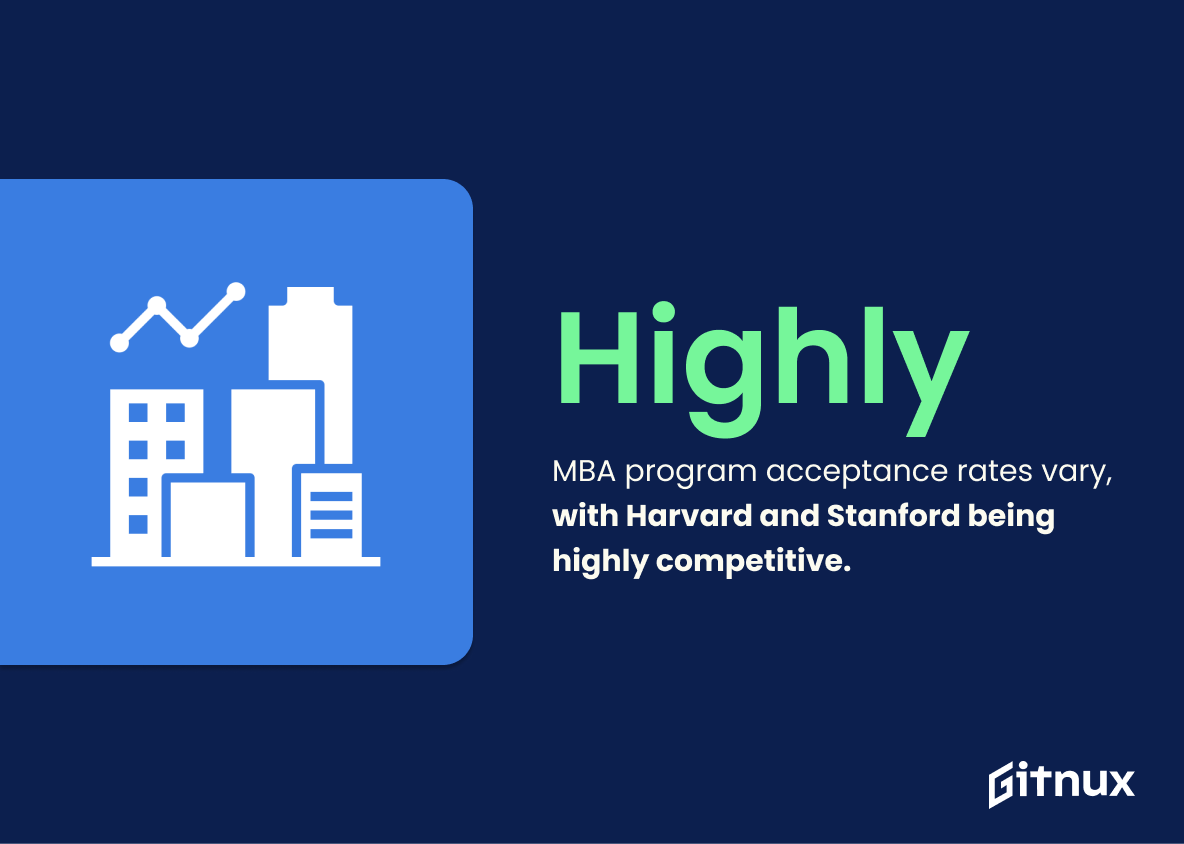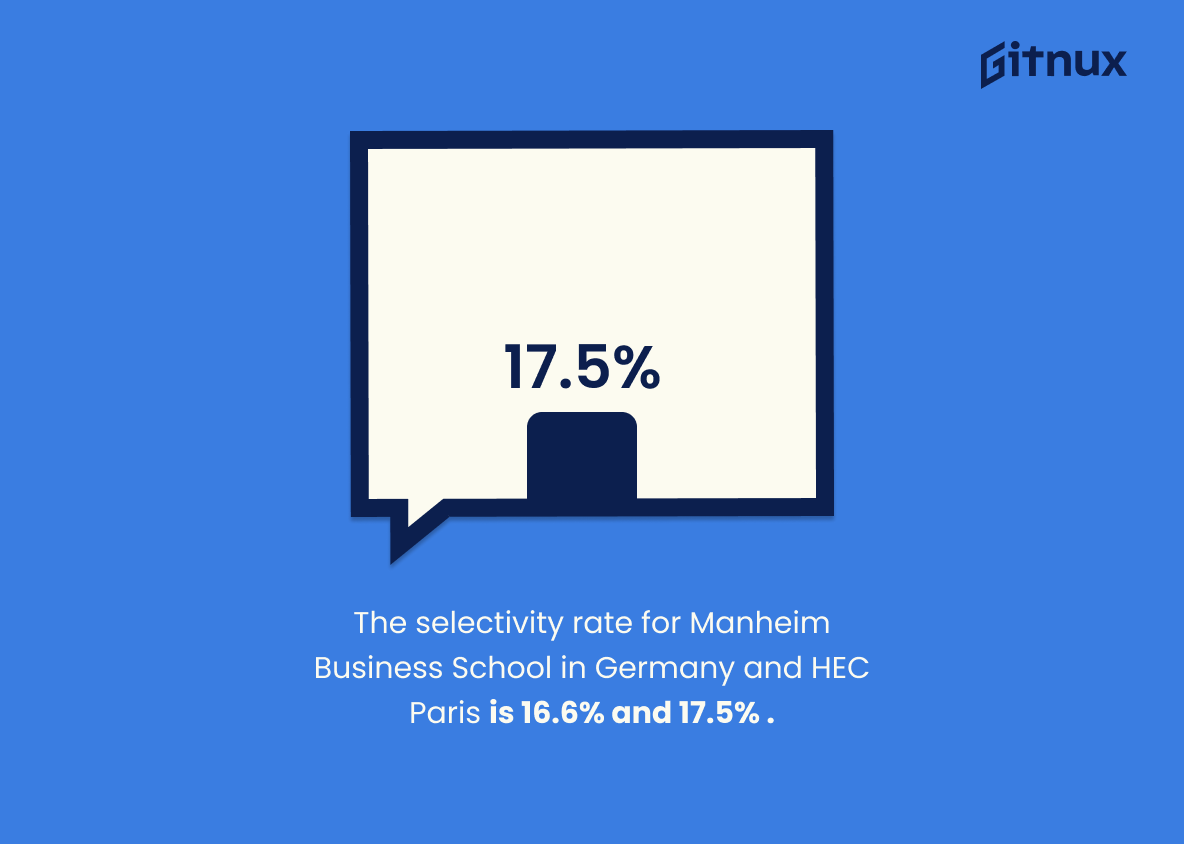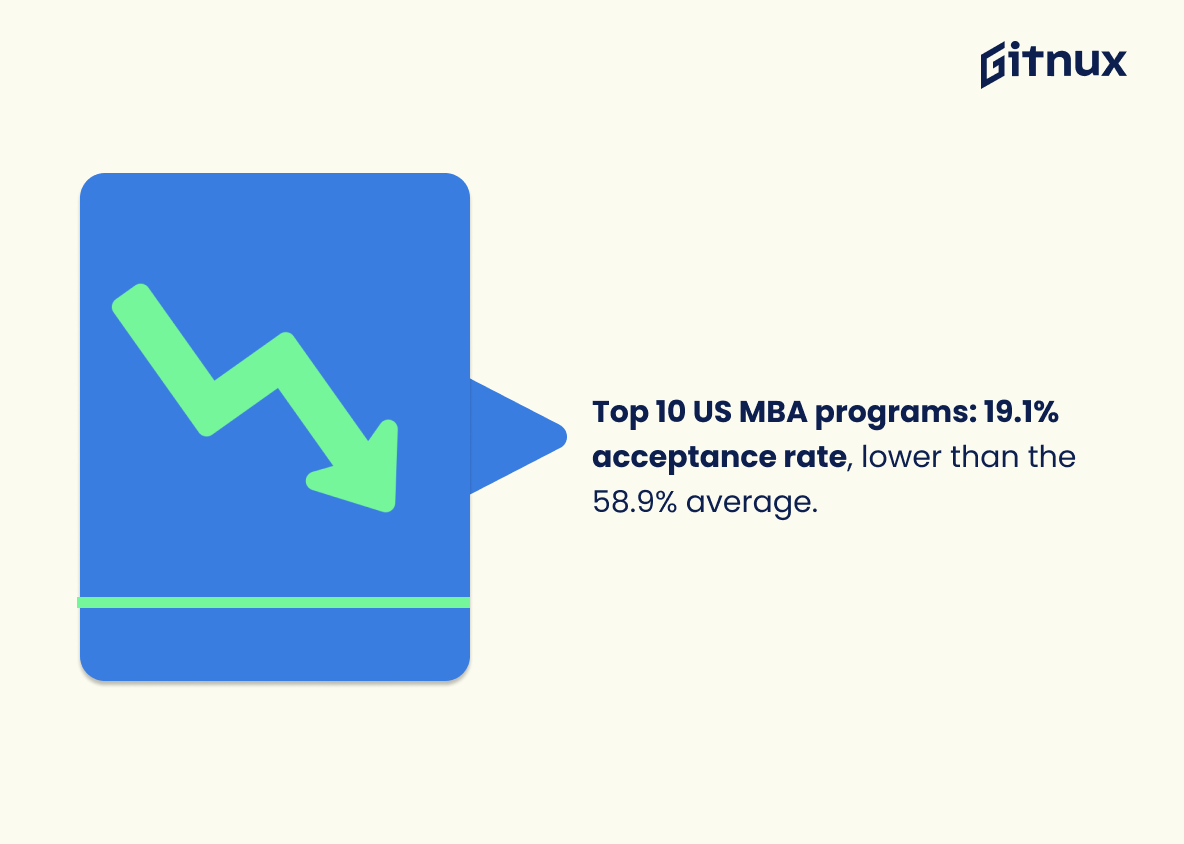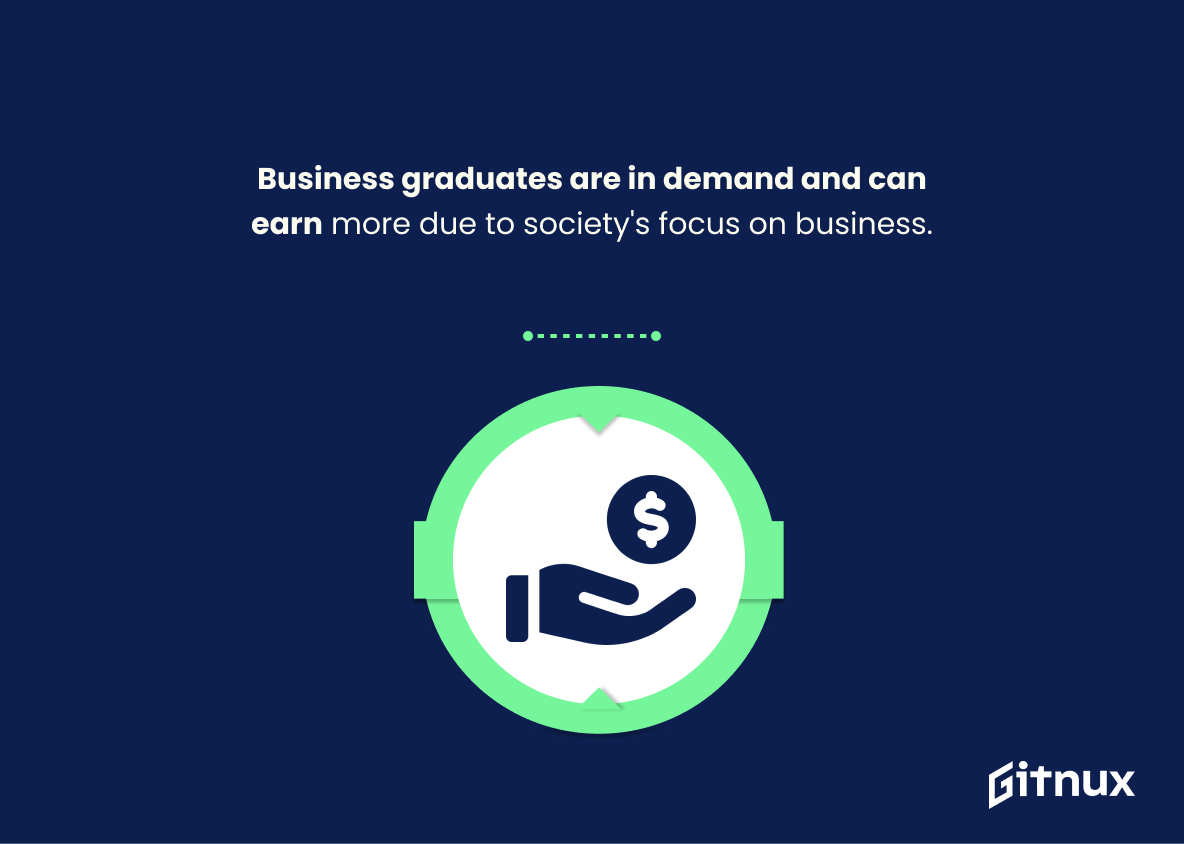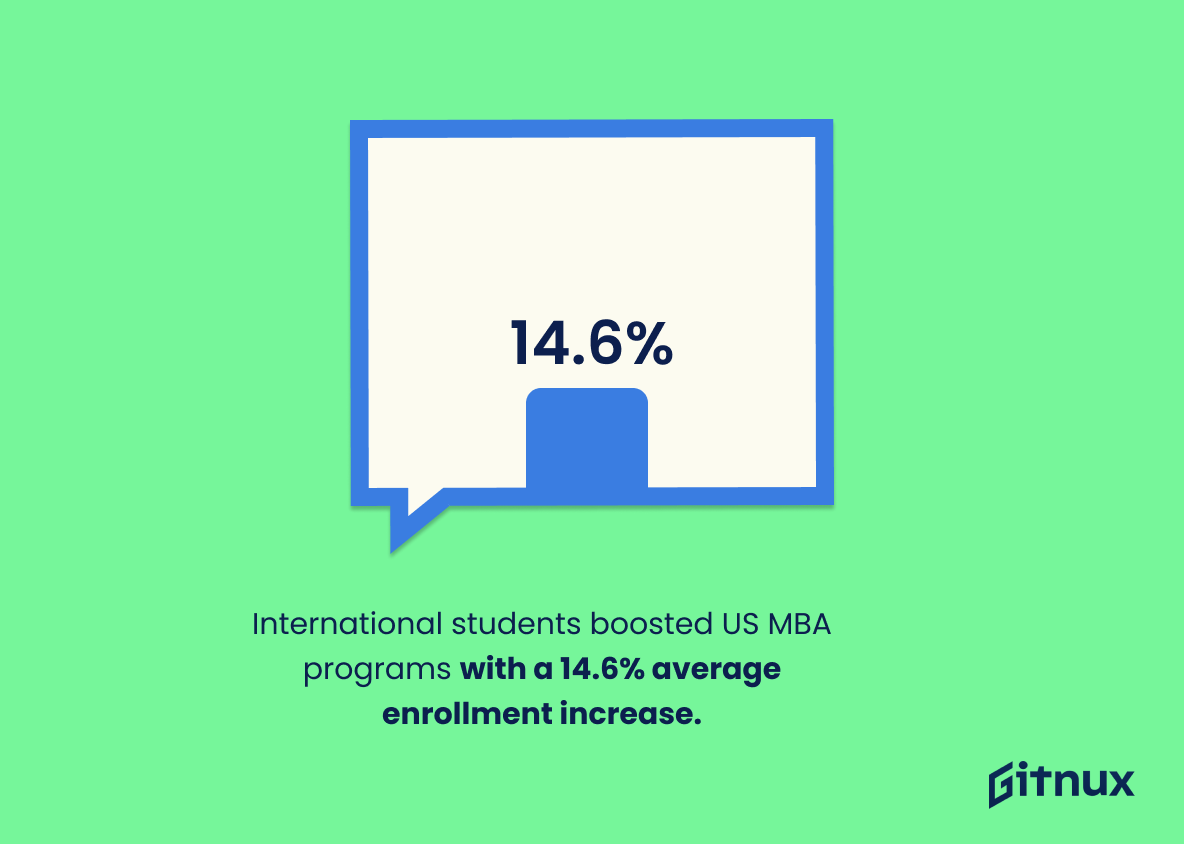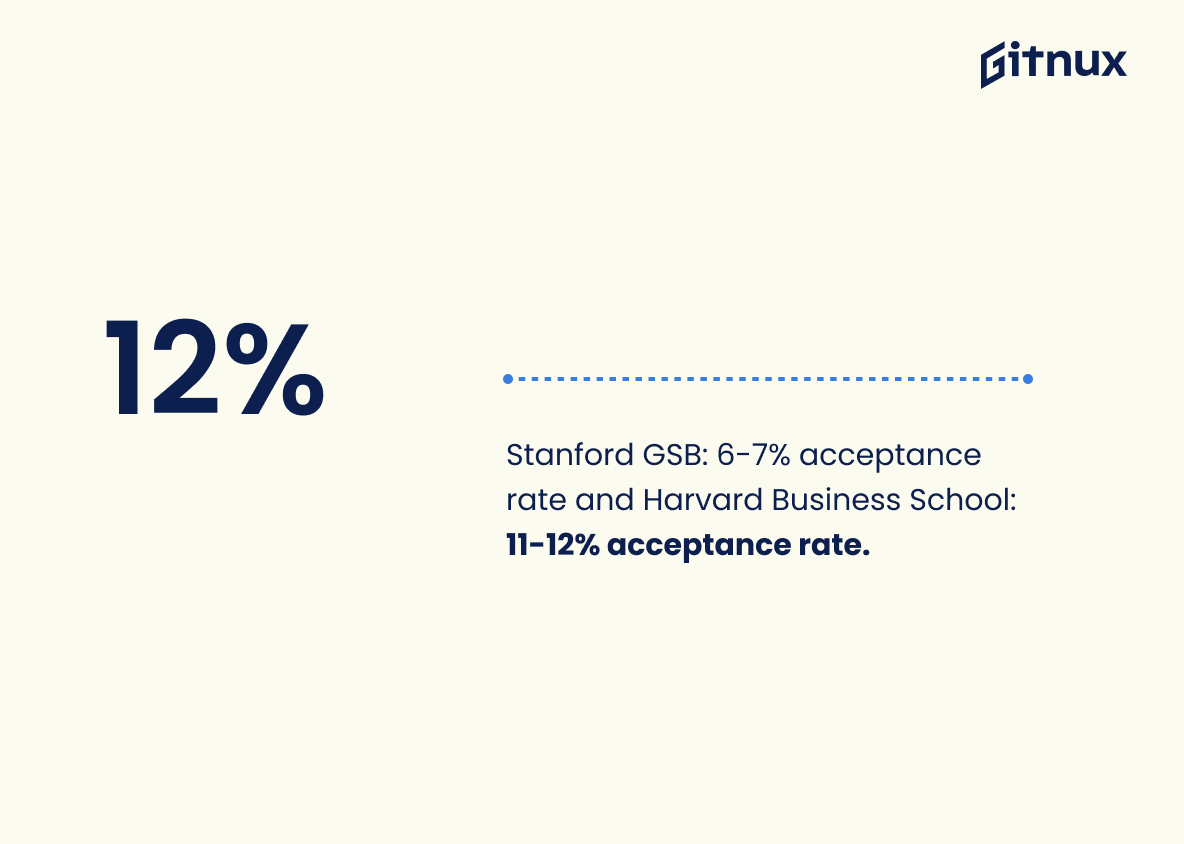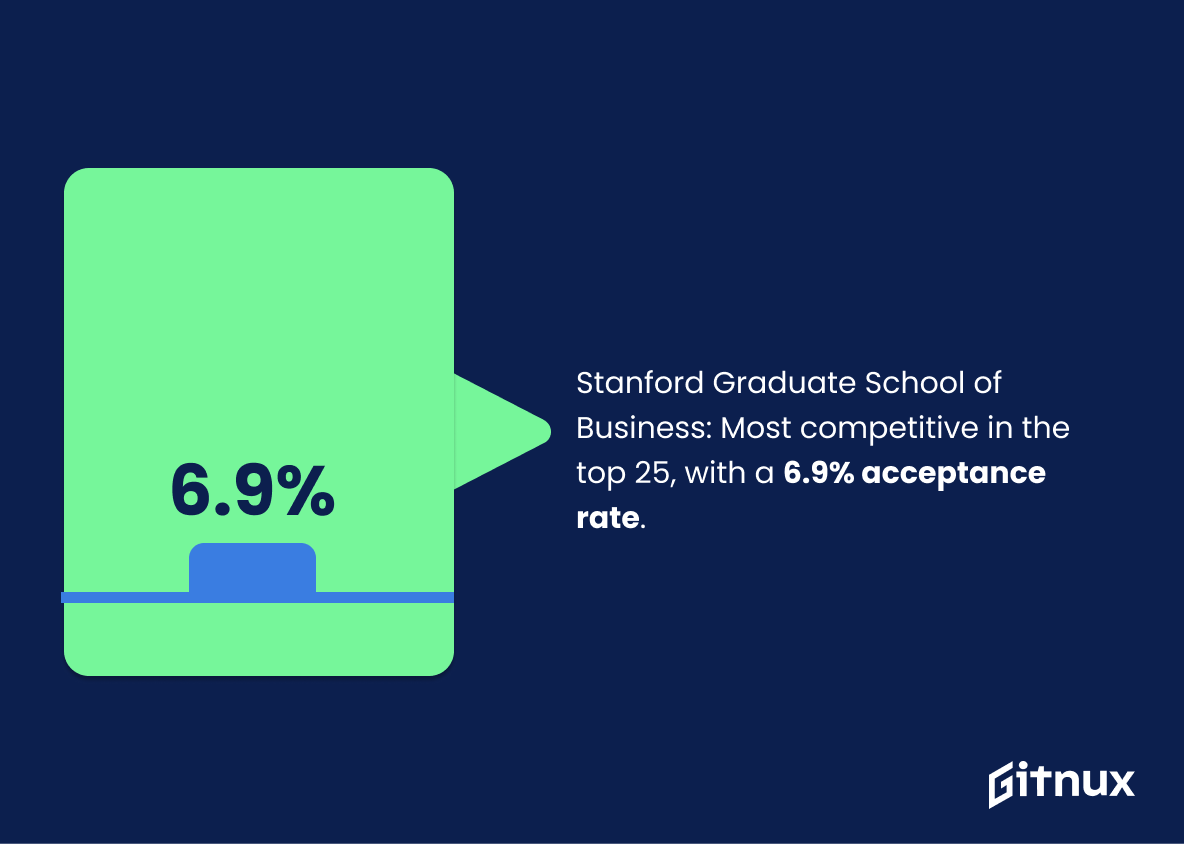Are you considering applying to business school? If so, you’re likely wondering what your chances of admission are. Knowing the admission statistics for business schools can help you make an informed decision about where to apply and how to best prepare your application.
In this blog post, we’ll take a look at the latest business school admission statistics and what they mean for your application.
Business School Admission: The Most Important Statistics
10 of the most selective full-time MBA programs in the US had an average acceptance rate of 19.1%, significantly lower than the average acceptance rate of 58.9% among all 138 ranked full-time MBA programs.
The Stanford Graduate School of Business is the most competitive on the list of the top 25 business schools, with an acceptance rate of 6.9%.
Business School Admission Statistics Overview
The Selectivity Index™ is a tool to compare MBA programs based on criteria such as average GPA, test scores, and acceptance rates.
In this, the acceptance rates for MBA programs vary widely, with some schools like Harvard and Stanford being more difficult to get into than others.
The acceptance rate for top business schools such as INSEAD, London Business School, Cambridge Judge and Oxford Said ranges from 30-35%, while the selectivity rate for Manheim Business School in Germany and HEC Paris is 16.6% and 17.5% respectively.
Knowing the acceptance rate of a particular school can help applicants gauge their chances of admission and determine which schools to apply to. Additionally, the selectivity rate of a school can provide insight into the quality of the program and the caliber of students it attracts.
MBA applicants face low acceptance rates at top US business schools, with Stanford and Harvard having 5.7% and 9.9% acceptance rates respectively. Mannheim and HEC Paris saw a year-over-year change of 3% and 5% respectively.
This shows the difficulty of getting accepted into top US business schools, as well as the changes in acceptance rates from year to year. In addition, it provides insight into the number of applications received and accepted at Mannheim and HEC Paris, which can be used to compare the difficulty of getting accepted into different business schools.
10 of the most selective full-time MBA programs in the US had an average acceptance rate of 19.1%, significantly lower than the average acceptance rate of 58.9% among all 138 ranked full-time MBA programs.
There is a high difference between the acceptance rates of the most selective MBA programs and the average acceptance rate among all MBA programs, which highlights the difficulty of getting accepted into the most selective programs. It also provides an indication of the competitiveness of the admissions process.
Business graduates are in high demand and have higher earning potential due to the prevalence of business in modern society.
Students who pursue a business degree have a wide range of career opportunities available to them and can expect to earn a higher salary than those with other degrees. It also shows that the ranking of a business school is based on various factors such as course satisfaction, student-staff ratio, and career prospects, which are essential considerations when choosing a business school.
Yale School of Management has 44% international student admission.
This shows the level of diversity at Yale School of Management and other leading business schools, which is important to consider when applying for admission, as it can provide a more enriching learning experience. Additionally, having a diverse student body can help to create a more global perspective and understanding of the business world.
International students have been the saving grace for MBA programs in the US, with a 14.6% average gain from 2020 to 2021 and some schools doubling their international ranks in two years.
Despite a strong US economy, international students are still interested in studying for a US MBA, which helps to keep the schools afloat.
Stanford GSB, Harvard Business School, and University of Pennsylvania Wharton have acceptance rates of 6-7%, 11-12%, and ~20%, respectively.
The acceptance rates of the top 25 business schools are important for prospective students to consider when deciding which school to apply to. Knowing the acceptance rate of a school can help students determine their chances of being accepted and also give them an idea of the competitiveness of the school.
The Stanford Graduate School of Business is the most competitive on the list of the top 25 business schools with an acceptance rate of 6.9%.
Conclusion
In conclusion, business school admission statistics can be a useful tool for prospective students to understand the competitive landscape of MBA programs.
It is important to remember that the numbers alone do not tell the full story, and that other factors such as personal fit and career goals should be taken into consideration when making a decision. Ultimately, the best way to make an informed decision is to research the program thoroughly and speak with current students and alumni.
References
1 – https://www.accepted.com/mba/selectivity-index
2 – https://menlocoaching.com/top-mba-programs/acceptance-rates/
3 – https://pythagurus.in/blogs/acceptance-rate-of-top-business-schools-in-europe/
4 – https://www.oneyearmba.co.in/mba-acceptance-rates-europe-16-6-mannheim-55-warwick/
5 – https://www.usnews.com/education/best-graduate-schools/the-short-list-grad-school/articles/10-business-schools-with-the-lowest-acceptance-rates
6 – https://admitexpert.com/blog/acceptance-rates-and-yield-rates-business-schools/
7 – https://ehef.id/post/top-10-toughest-business-school-get-uk/en#:~:text=1.,entry%20is%20237%20UCAS%20points
8 – https://amberstudent.com/blog/post/universities-with-low-acceptance-rate-universities-in-uk#:~:text=With%20a%20mere%208%25%2C%20the,are%20typically%20accepted%20to%20Cambridge.
9 – https://www.clearadmit.com/real-numbers-of-mba-admissions/international-students-statistics/
10 – https://poetsandquants.com/2022/12/06/the-u-s-mba-programs-with-the-most-international-students-2/
11 – https://www.joinleland.com/library/a/acceptance-rates-of-top-25-mba-programs
12 – https://www.topmba.com/mba-programs/mba-acceptance-rates-worlds-top-20-business-schools
